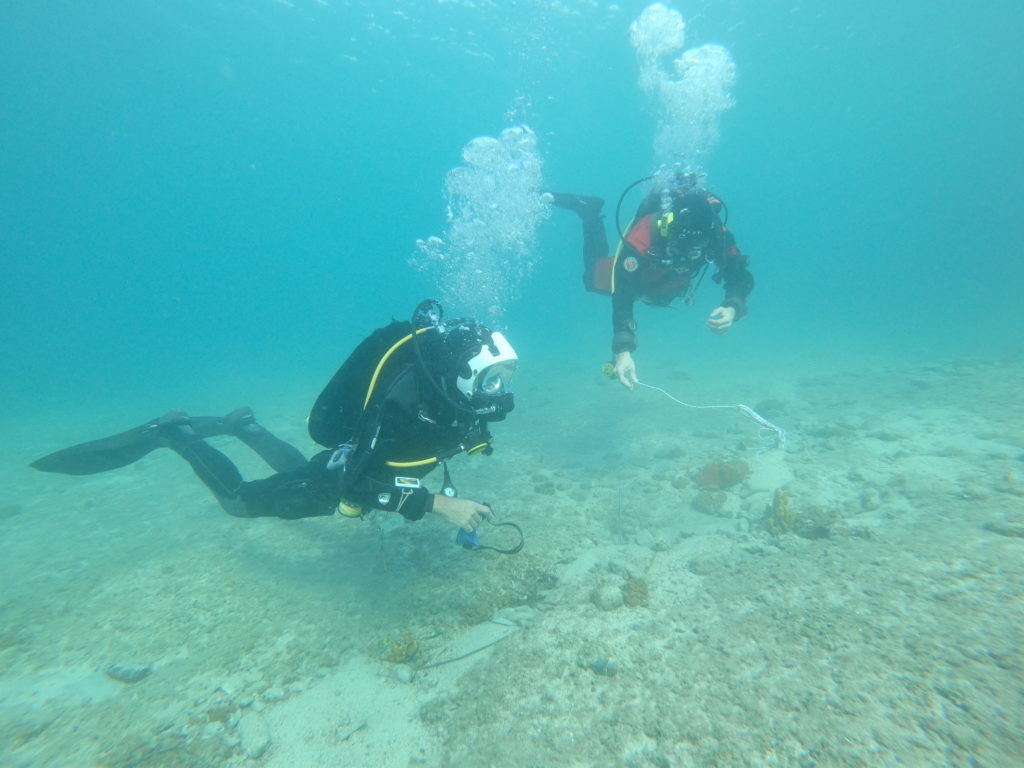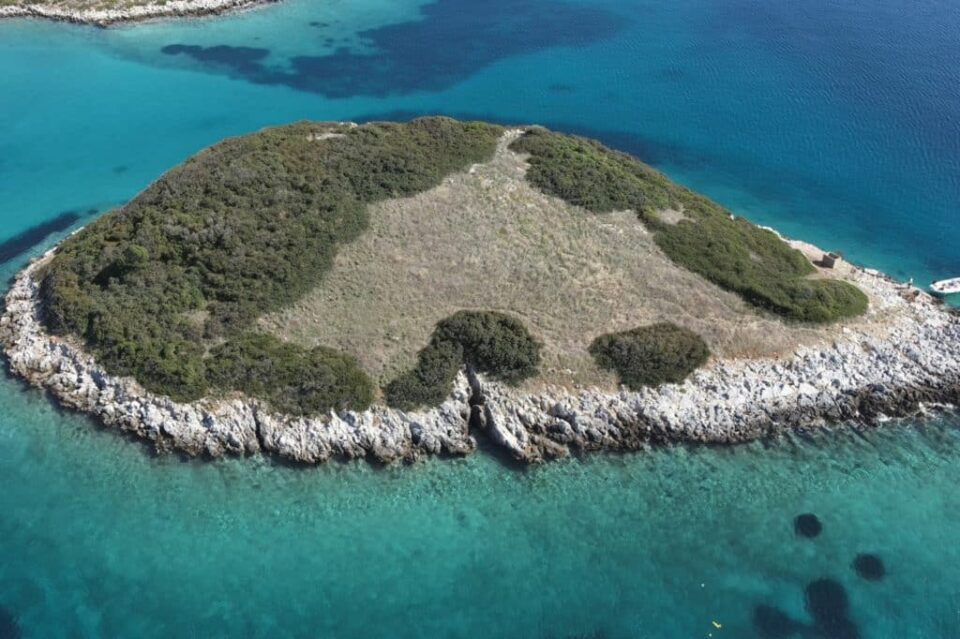

The small islet of Agios Petros, north of Alonissos, Greece, is believed to be the oldest submerged settlement of the Aegean.
Founded around the end of the 7th millennium BC by a community of farmers, fishermen, and seafarers, Agios Petros presents a unique archaeological example of an island settlement.
In Agios Petros (Saint Peter) a civilization flourished for about 1,000 years. A few dozen families settled permanently on the islet, which at the time was connected by land to its larger neighbor Kyra Panagia, around 6100 BC.

“The fact that the marine settlement of Agios Petros is preserved to this day at the bottom of the Aegean several thousand years after it was founded by the first agricultural groups that arrived in Greece, makes it a special archaeological site,” Nikos Efstratiou, professor of Prehistoric Archeology at the Aristotle University of Thessaloniki (AUTH) says.
Efstratiou, who has been heading the archeological research in the area, adds that the site “allows us to investigate a series of important issues concerning the history of the island, the habitation in the Aegean, and the natural environment that the first islanders saw.”
Excavations on the islet have revealed stone rectangular and arched buildings, two children’s burials in natural rock cavities, stone piles, and ancient walls.
In addition, human-like figurines, inscribed ceramic sherds, and tools made of flint were uncovered, as well as food remains from various animals, birds, fish and oysters.
“The islet was not an isolated community but had cultural contacts with other and often more distant areas such as the southern Aegean, Thessaly, the Balkans, and Anatolia. The arrival of agricultural groups from Anatolia to Greece has been proven by archaeological finds,” Efstratiou says.
Inhabitants of Agios Petros were farmers, fishermen and hunters
“We learned from the excavations that the inhabitants of Agios Petros were farmers, breeders but also fishermen and hunters. This is evidenced by the remains of animals, birds and fish found in the archaeological layers, on land, and in the sea,” he adds.
The prehistoric settlement of Agios Petros was first discovered in the 1960s by the archaeologist Dimitris Theoharis, then the Antiquities Commissioner of Thessaly.
Since the 1980s, the head of research has been Efstratiou, who carried out the first marine research in the area, in collaboration with the well-known oceanographer N.C. Flemming and a team of divers from the University of Cambridge.

Today the research conducted by the AUTH and the Ephorate of Marine Antiquities is part of a promising five-year program.
What archaeologically distinguishes Agios Petros from other projects in Greece is the extensive underwater research, which started in 2021 in the context of an ambitious five-year program (2021-2025).
“Research is focused on locating ancient human DNA and opening test sections at the points where surviving architectural remains have already been identified. We are also looking for clues that will enlighten us about the practices of early navigation in the Aegean, such as for example the type of boats used by the first islanders – something about which we can only make assumptions since there is a lack of similar findings internationally”, he emphasizes.
At the time the settlement was developed, the islet of Agios Petros was connected to Kyra Panagia by a peninsula, which today has been submerged.
“The process of the gradual sinking of the settlement of Agios Petros is a completely natural process related to the continuous rise of the sea level and not due to some dramatic geological phenomenon,” Efstratiou says.
Related: Dispilio: The Lakeshore Prehistoric Settlement of Greece
